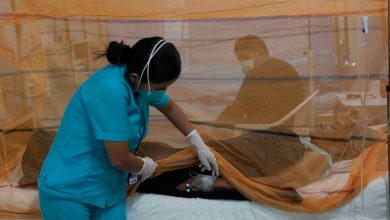Lucid Episodes in Dementia Explored

Summary: A new study explores lucid episodes in people with advanced dementia, revealing that these episodes are not limited to near-death scenarios as previously thought. By surveying family caregivers, the researchers classified these episodes into types based on their quality and context, finding that 75% of those who experienced moments of lucidity had Alzheimer’s disease.
The study aims to better understand these spontaneous episodes of clarity, reassuring caregivers that these moments do not necessarily signal the end of life. This research is essential for improving caregiver interactions and dementia care management.
Highlights:
- 75% of lucid episodes occurred in people diagnosed with Alzheimer’s disease.
- The study identified different types of lucid episodes, debunking the myth that they predict death.
- 61% of people who experienced lucid episodes were women, 31% of whom lived in the same household as their caregivers.
Source: Mayo Clinic
A recent Mayo Clinic study published in Alzheimer’s and dementia: the journal of the Alzheimer’s Association studied lucid episodes in people living with advanced stages of dementia, providing insight into how these events reveal themselves.
The results showed that 75% of people with lucid episodes had Alzheimer’s disease, as opposed to other forms of dementia.
Researchers define lucid episodes as unexpected, spontaneous, meaningful and relevant communication from a person believed to have permanently lost the capacity for coherent interactions, whether verbally or through gestures and actions.
Caregivers of people with dementia were surveyed and asked about their reporting of episodes of lucidity. The researchers then classified the episodes into types.
The study aimed to determine if there were distinct patterns or types of lucid episodes that could be used to understand why or when they occur.
Joan Griffin, Ph.D., lead author of the study.
“We determined the episode types based on the circumstances surrounding the episode, the quality of communication during the episode, its duration, the level of cognition of the person with dementia before the episode and the proximity to death,” says Joan Griffin, Ph.D., lead author of the study.
The results revealed that of those who had lucid episodes, 61% were women, 31% of whom lived in the same household as the caregiver who completed the survey.
“We know that these lucid episodes occur, but we didn’t know if there are different types of episodes that occur at different times or under different circumstances,” says Dr. Griffin. “This study helped clarify that there are likely different types of episodes.”
Unlike previous research findings, the findings of this study challenge the idea that lucid episodes could signal impending death.
“It’s important for people to know that these are not necessarily warning signs of death,” says Dr. Griffin. “I think people can become anxious when they occur, so it’s good to know that there are different types of episodes that don’t necessarily mean death is imminent.”
Dr. Griffin notes that researchers are currently conducting a longitudinal study to better understand lucid episodes and how caregivers respond to them and derive meaning from them. Longitudinal studies allow researchers to track changes or behaviors over time and identify any relationships between these changes.
“With this new study, we will be able to better understand existing trends and determine the consequences of the episode over time,” says Dr. Griffin.
Show compassion to caregivers and their loved ones
Dr. Griffin emphasizes the need to understand these episodes to help caregivers in their work and remind them of the cognitive and emotional potential of people with dementia.
“Caregivers of people with dementia face a long list of challenges and it can be daunting,” says Dr. Griffin. “Perhaps understanding these episodes can help ease that burden.”
“We found in our research and in caregivers’ stories that these types of episodes change the way they interact with and support their loved ones – usually for the better,” she adds.
“These episodes can remind us that caregiving is challenging, but we can always try to care with a little more humanity and grace. »
The Mayo Clinic Robert D. and the Patricia E. Kern Center for the Science of Health Care Delivery supported this research.
About this dementia research news
Author: Megan Luihn
Source: Mayo Clinic
Contact: Megan Luihn – Mayo Clinic
Picture: Image is credited to Neuroscience News
Original research: Free access.
“Developing and describing a typology of lucid episodes in people with Alzheimer’s disease and associated dementias” by Joan Griffin et al. Alzheimer’s and dementia
Abstract
Develop and describe a typology of lucid episodes in people with Alzheimer’s disease and associated dementias
INTRODUCTION
This study examined lucid episodes in people living with advanced Alzheimer’s disease and related dementias (PLWD) and then developed a typology of these episodes to help characterize them.
METHODS
Family caregivers of persons with disabilities provided information on observed episodes, including proximity to death, cognitive status, duration, quality of communication, and circumstances preceding lucid episodes for up to two episodes ( the caregiver NOT = 151; episode NOT = 279). Latent class analysis was used to classify and characterize empirically distinct groups of lucid episodes.
RESULTS
Four types of lucid episodes have been identified. The most common type occurred during family visits and in people with disabilities who had lived >6 months after the episode. The least common type coincided with family visits and occurred within 7 days of the death of the disabled person.
DISCUSSION
The results suggest that there are several types of lucid episodes; not all report imminent death; and some, but not all, are precipitated by external stimuli.
News Source : neurosciencenews.com
Gn Health





